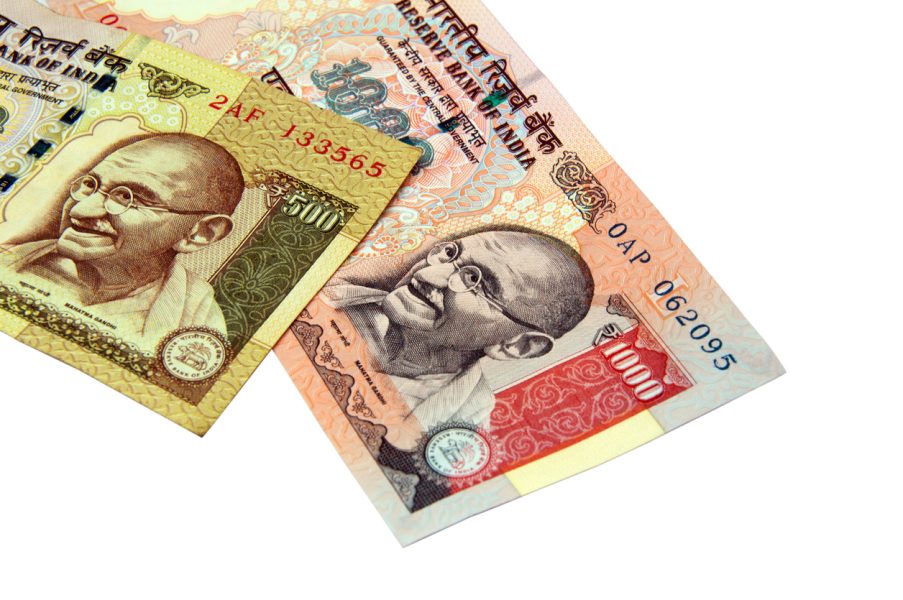
Demonetisation: Cash is still king, circulation rises by 83 per cent

Demonetisation of the high value currency notes of Rs 500 and Rs 1,000 did not have any discernible impact on currency in circulation (CIC) in the country, which has soared by almost 83 per cent since its announcement on November 8, 2016.
The Supreme Court on Monday upheld the decision of the government on demonetisation.
On November 8, 2016, Prime Minister Narendra Modi had announced demonetisation of old Rs 1,000 and Rs 500 banknotes and one of the key objectives of the unprecedented decision was to promote digital payments and curb black money flows.
RBI data
According to the Reserve Bank of India (RBI) data, the CIC in value terms soared from Rs 17.74 lakh crore on November 4, 2016, to Rs 32.42 lakh crore on December 23, 2022.
Also read: SC upholds demonetisation, says ‘whether objective achieved or not is irrelevant’
However, soon after demonetisation, the CIC fell precipitously to a low of about Rs 9 lakh crore on January 6, 2017, nearly 50 per cent of Rs 17.74 lakh crore on November 4, 2016. This was the lowest in the past six years following the scrapping of old 500- and 1,000-rupee bank notes that accounted for around 86 per cent of the total notes at that time.
Compared with January 6, 2017, the CIC has seen more than three-fold or 260 per cent jump, while from November 4, 2016 it has seen about 83 per cent jump.
As remonetisation gathered pace, CIC moved up week after week and reached 74.3 per cent of the peak by the end of the financial year. Subsequently, around 85 per cent of its pre-demonetisation peak at the end of June 2017.
Liquidity situation
Demonetisation led to a decline in CIC by about Rs 8,99,700 crore (up to January 6, 2017) which resulted in a large increase in surplus liquidity with the banking system, equivalent to a cut in the Cash Reserve Ratio (percentage of deposits parked with the RBI) by about 9 per cent.
This posed a challenge to the RBI’s liquidity management operations and the central bank used instruments, especially reverse repo auctions under the liquidity adjustment facility (LAF) window to absorb surplus liquidity in the banking system.
CIC rose to Rs 32.42 lakh crore at the end of December 23, 2022, as compared to Rs 31.33 lakh crore at the end of March 31, 2022.
In the following year of demonetisation, CIC jumped by 37.67 per cent to Rs 18.03 lakh crore, and surged 17.03 per cent to Rs 21.10 lakh crore at the end of March 2019 and 14.69 per cent to Rs 24.20 lakh crore at the end of 2020.
In the previous two years, the pace of CIC growth in value terms was 16.77 per cent to Rs 28.26 lakh crore by March 31, 2021, and 9.86 per cent to Rs 31.05 lakh crore at the end of March 2022.
The SC verdict
Asserting that the decision-making process was not flawed, the Supreme Court in a 4:1 majority verdict upheld the government’s 2016 decision to demonetise the Rs 1,000 and Rs 500 denomination notes.
There has to be great restraint in matters of economic policy and the court cannot supplant the wisdom of the executive by a judicial review of its decision, a five-judge Constitution bench of the apex court, headed by Justice S A Nazeer, said.
Justice B V Nagarathna dissented from the majority judgment on the point of the Centre’s powers under Section 26(2) of the RBI Act and said the scrapping of the Rs 500 and Rs 1,000 series notes had to be done through a legislation and not through a notification.
“Parliament should have discussed the law on demonetisation, the process should not have been done through a gazette notification. Parliament cannot be left aloof on an issue of such critical importance for the country,” Justice Nagarathna said.
Also read: Demonetisation verdict explained | What dissenting SC judge, 4 other judges said
She also said there was no independent application of mind by the RBI and only its opinion was sought, which cannot be said to be a recommendation.
The bench, also comprising justices B R Gavai, A S Bopanna and V Ramasubramanian, said the Centre’s decision-making process could not have been flawed as there was consultation between the RBI and the Union government.
The top court’s judgment came on a batch of 58 petitions challenging the demonetisation exercise announced by the Centre on November 8, 2016.
(With Agency inputs)


